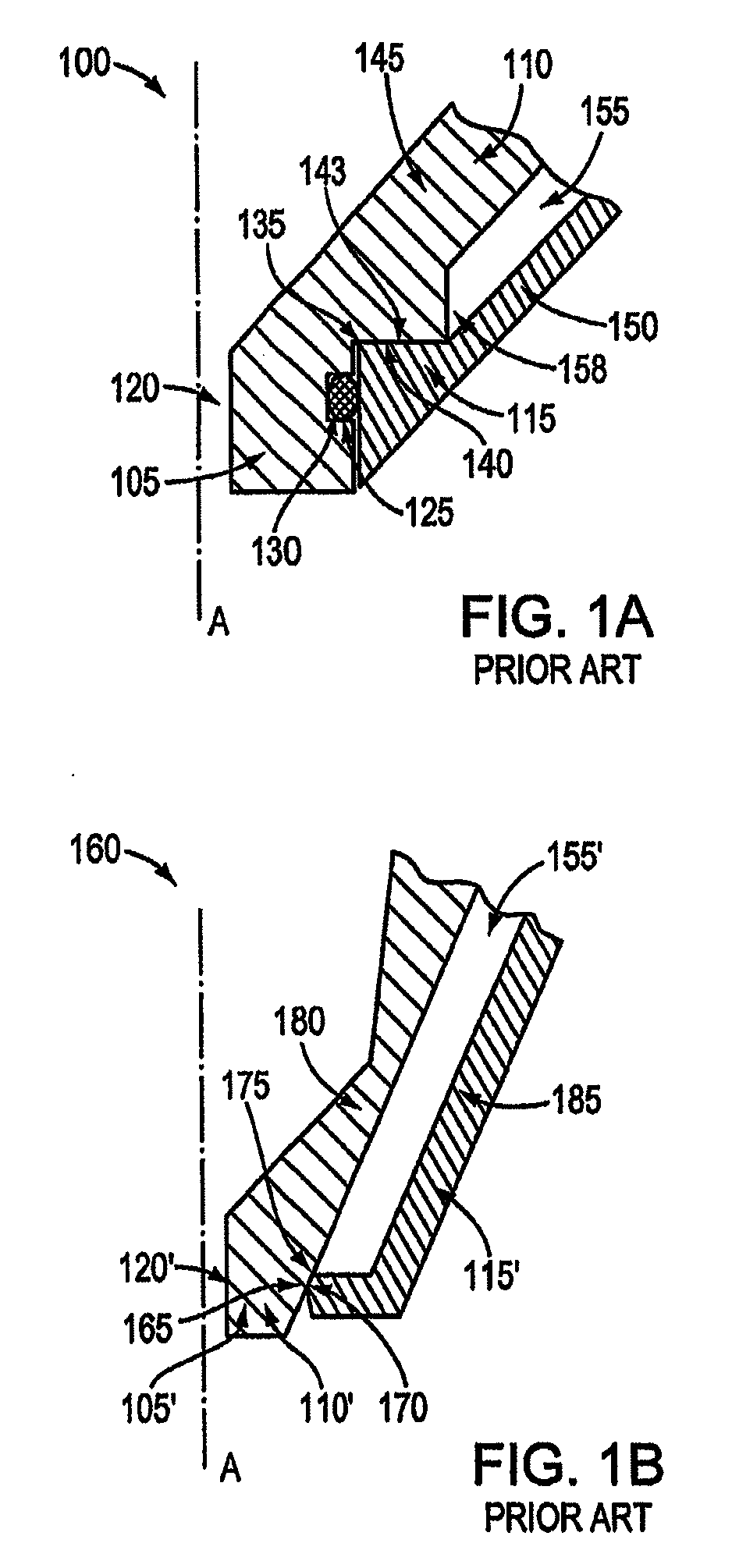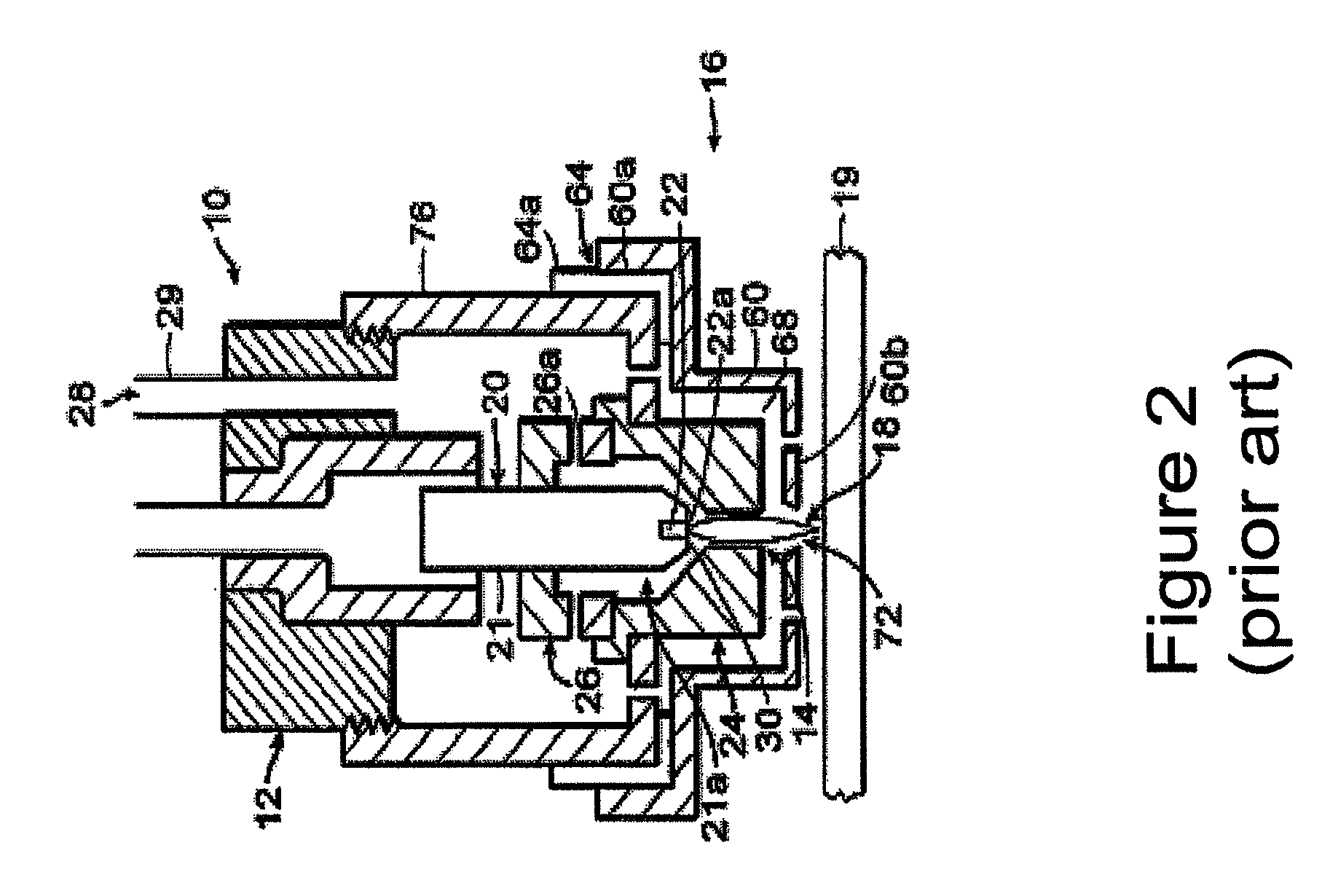Plasma arc torch cutting component with optimized water cooling
a technology of cutting components and plasma arc torch, which is applied in the field of high-temperature processing of metallic materials, can solve the problems of overheating of the nozzle, local melting of the nozzle material, and oxidation erosion of the nozzle material, and achieve the effect of reducing fluid flow stagnation
- Summary
- Abstract
- Description
- Claims
- Application Information
AI Technical Summary
Benefits of technology
Problems solved by technology
Method used
Image
Examples
Embodiment Construction
[0071]FIG. 2 illustrates in simplified schematic form of a known plasma arc cutting torch 10 representative of any of a variety of models of torches sold by Hypertherm, Inc., with offices in Hanover, N.H. The torch 10 has a body 12 that is typically cylindrical with an exit orifice 14 at a lower end 16. A plasma arc 18, i.e., an ionized gas jet, passes through the exit orifice 14 and attaches to a workpiece 19 being cut. The torch 10 is designed to pierce and cut metal, particularly mild steel, or other materials in a transferred arc mode. In cutting mild steel, the torch 10 operates with a reactive gas, such as oxygen or air, as the plasma gas 28 to form the transferred plasma arc 18.
[0072]The torch body 12 supports a copper electrode 20 having a generally cylindrical body 21. A hafnium insert 22 can be press fit into the lower end 21a of the electrode 20 so that a planar emission surface 22a is exposed. The torch body 12 also supports a nozzle 24 which is spaced from the electrode...
PUM
| Property | Measurement | Unit |
|---|---|---|
| elastomeric | aaaaa | aaaaa |
| conductive | aaaaa | aaaaa |
| heat | aaaaa | aaaaa |
Abstract
Description
Claims
Application Information
 Login to View More
Login to View More - R&D
- Intellectual Property
- Life Sciences
- Materials
- Tech Scout
- Unparalleled Data Quality
- Higher Quality Content
- 60% Fewer Hallucinations
Browse by: Latest US Patents, China's latest patents, Technical Efficacy Thesaurus, Application Domain, Technology Topic, Popular Technical Reports.
© 2025 PatSnap. All rights reserved.Legal|Privacy policy|Modern Slavery Act Transparency Statement|Sitemap|About US| Contact US: help@patsnap.com



